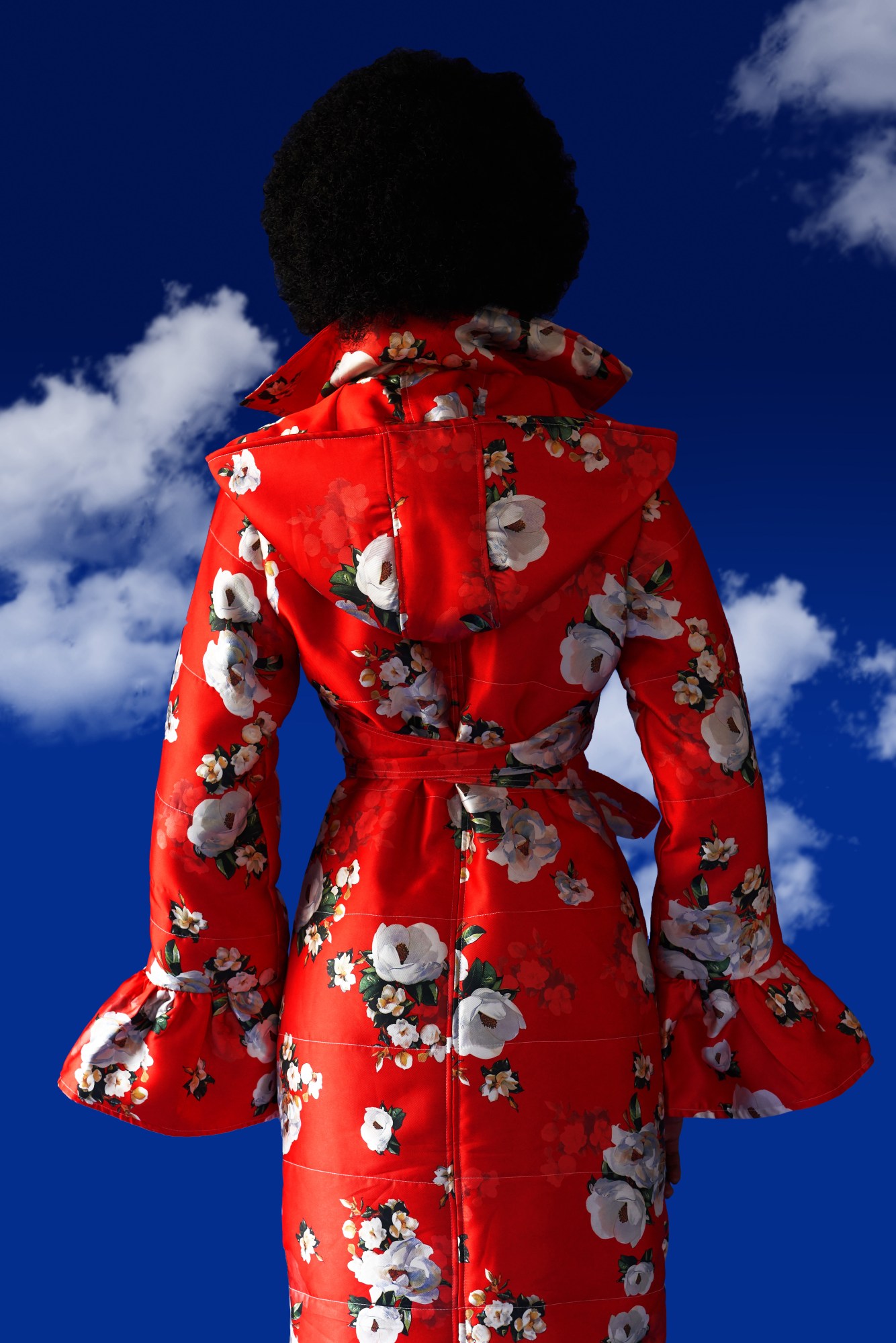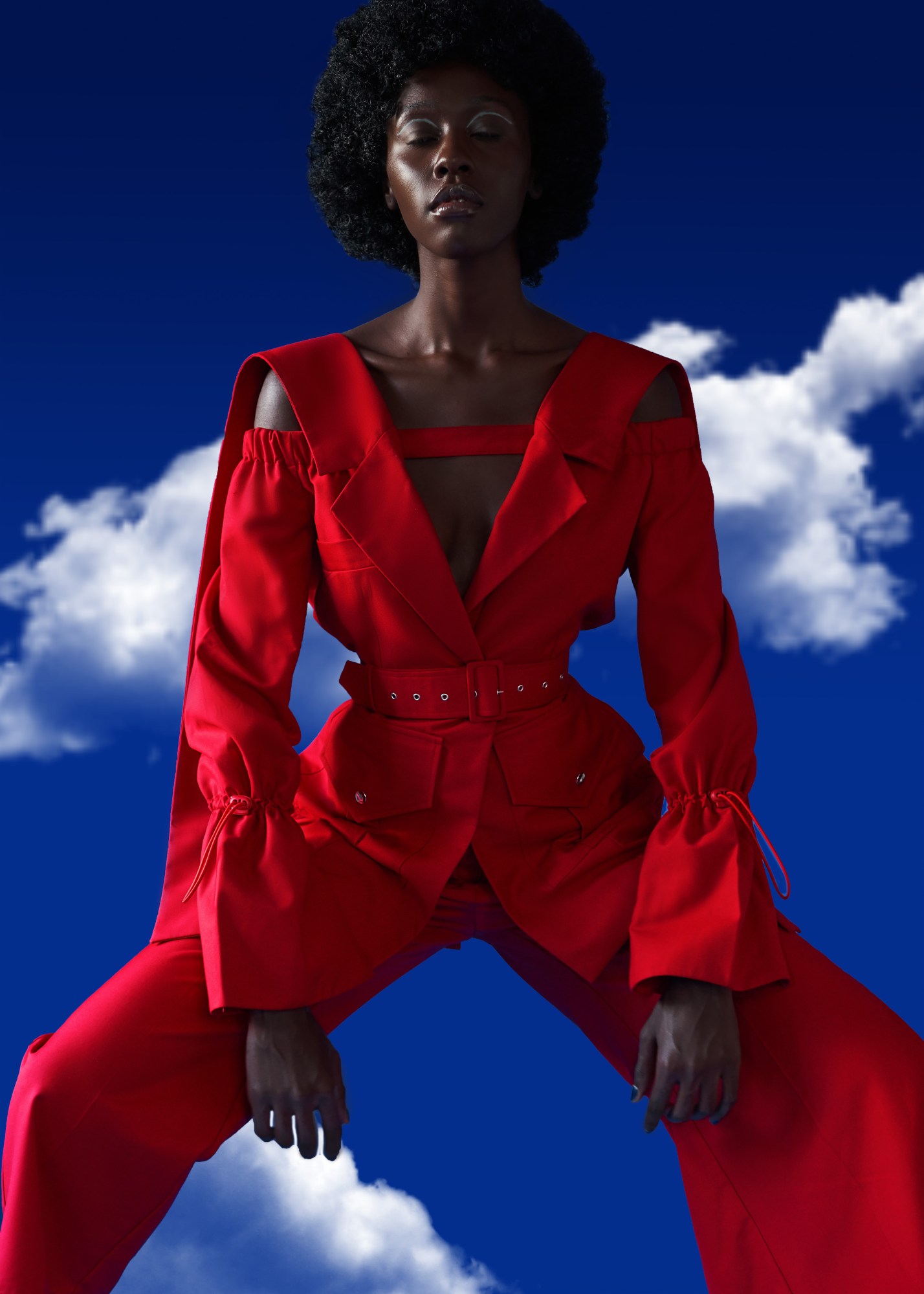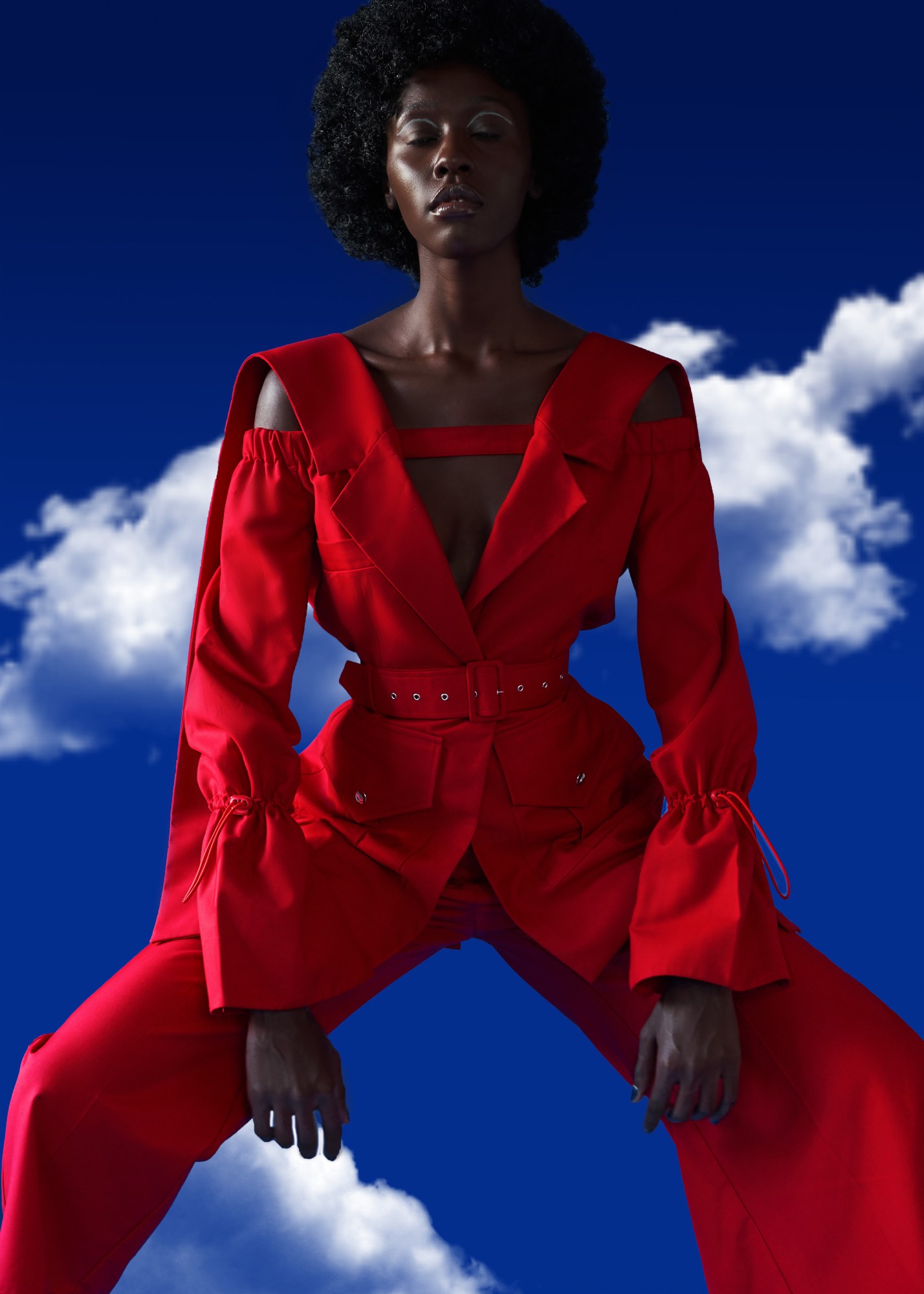Designer Thebe Magugu is fascinated by South African culture. Born and raised in a rural outskirt in Northern Cape and now residing in the bustling city of Johannesburg, Thebe’s entire life has been heavily informed by the local people and places around him. As a designer he has delved deep into the meaning of his home’s cultural traditions and experimented with how they function in and outside of their original spaces. These moments of independent study and engaging with his community have greatly enriched Magugu’s womenswear. Today, this was recognised as he was announced as a finalist for the prestigious 2019 LVMH Prize.
At 26 years old, Thebe joins a very short list of African-born designers to be nominated for the LVMH Prize. The historic lack of African representation within the competition and inside other Western design institutions has less to do with an absence of talent on the continent, and more to do with the tendency for people living outside of Africa to not appreciate or consider African fashion, beyond the scope of traditional African printed designs that have come to define the industry. This oversight of the diversity of African fashion has made Thebe’s nomination even more special. His autumn/winter 19 collection, the collection he’s nominated for, tackles the idea of what it means to be African, and in his case an African designer, today.
Entitled African Studies, Thebe considers autumn/winter 19 as much a multi-disciplinary project as an actual collection. Just last month, he debuted his new zine, Faculty Press, which explored the same theme. This concept of African studies has inspired him to reflect closely on the traditional images of Africa and insert them into a contemporary vision that, like the rest of the world, is impacted by global modernisation. Red two-piece suits are cut in the shape of safari wear, and illustrations from local South African illustrator Phathu Nembilwi are set against the structured contemporary dresses and tops Thebe has become known for.
More than a typical nomination, Thebe’s presence among the other LVMH Prize finalist is a testimony to the emerging design scene bustling in South Africa, and other countries around the continent. For years, Thebe has designed tailored separates that challenge the boundaries of femininity and exude power. Now, with the fashion industry paying attention he, along with fellow African designer and LVMH nominee, Nigerian Kenneth Ize, have the potential to shift the narrative of African design and share the continent’s beauty while doing it. Here, we speak to the emerging designer about what his nomination for the LVMH Prize means to him.

How do you feel, being nominated for one of fashion’s most prestigious prizes?
It’s definitely a stamp of approval from a company I hold in such high regard. It’s really giving me such confidence and it’s already opened doors for me. From the minute I was nominated for it, so many opportunities came rushing in.
Why do you think it is important for institutions like LVMH to recognise African designers?
Because they’re such an authority in fashion. They really can incite change from the very top, and these decisions trickle down the industry and affect everything. More diverse voices within the LVMH shortlist spreads the idea of diversity throughout all the multiple fields within fashion, whether that’s the visibility of designers or certain conversations that are had around diversity. I think they do have a responsibility to showcase new diverse voices because I think they have the power to make that the industry standard.
In what way has working within South Africa’s emerging art and design scene impacted your brand?
I think because we’re an emerging market within fashion, South Africa right now doesn’t have a lot of resources. I think that sort of pushed me to make do with the little resources I have. For example, all of our mills closed down so we get a lot of imported fabrics but a lot of it is unwanted. Within that, I try to find creative ways to make what I do with the fabric quite an aspirational product. I think just resourcefulness is something that the South African climate has really taught me.
How have other South African designers and artists influenced your designs?
I haven’t had a single collection that hasn’t been sort of informed by another field or another creative. I think it makes things a bit more exciting letting other sorts of voices into the brand, whether that’s through the jewellery collaborations or printmaking. I think that adds another element to the collection. The printmakers collaboration is such a key thing for me whenever I create work because it just makes things a bit more refined and smarter.
What South African creatives did you work with for the autumn/winter 19 collection?
This collection is titled African Studies, which is more of a multi-disciplinary project than a collection because you know the theme of my new zine, Faculty Press, is African Studies as well. When it comes down to the collection some of the prints were made with the illustrator Phathu Nembilwi, and her prints are celebratory of South African women, and women in general. Her illustrations paint such a positive picture that I really wanted to introduce that element into the collection. So some of the dresses and blouses have prints we collaborated together on.

What’s the story behind the collection’s African Studies theme?
I wanted to merge motifs, prints, and just general references from my own culture with shapes and proportions that are quite tailored and are quite forward-looking. It’s just those juxtapositions that the collection is really based on. For example, there’s a jacket that’s formal on one side but on the other, it’s the same fabric but it’s sort of draped like a side cape. Just merging all these juxtaposing elements together like modern and parts of my culture together, that’s how I came to African Studies. I believe authenticity isn’t us removed completely from what’s happening around us but it’s how we interact with it and how we are in relation to it.
What was happening around you that influenced the collection’s aesthetic?
I think the general buzz more now than ever around what constitutes an authentic sort of Africa. I just want to make sure that people understand that you can’t reduce African design to just a print, so in this collection, I just wanted to show what South Africa really is. For example, I’ve been doing quite a lot of things in London. A lot of people I spoke to weren’t actually familiar with South Africa as an aesthetic and they sort of clump it together as possibly just print or really basic fit and flare silhouettes because they have no reference of it. So when I was doing this collection I just wanted to sort of rewrite that narrative and show people that we actually are capable of very contemporary shapes while keeping our heritage in check.
What was your design process like?
When I approach each subject there’s quite a lot of writing that goes into it before. If I do anything else before it’s a complete mess, I need to have criteria to guide me. I started writing down a list of things that interest me, textures for example. Going through it there were keywords like cracked soil, corrugated iron all these things that sort of remind me of back home and my culture. I had to see how all of this can inform the actual design, how do I take all this theory and sort of feed it into what it would look like as an aesthetic and as a design. From that list I design the whole collection with the sketches, and then I start assigning fabrics to each thing, and then I do the patterns and then it goes into the sewing. I approach it in quite a systematic way. I can’t really do it any other way.
What inspired this mini shoot with photographer Aart Verrips?
I liked the idea of making the shoot quite surreal. You can tell that the cloud is superimposed but we liked the colour contrast between the cobalt and the red. That suit, in particular, is one of my favourites because it’s taking the idea of safari elements. You cannot think about South Africa and not think about safari. One of the references is safari and I thought it would be so interesting to merge that with this formal suit that’s off the shoulder. It was all these elements coming together to form something quite interesting. As I said, there’s a lot of juxtaposition in the collection.

Thebe Magugu’s autumn/winter 19 collection ‘African Studies’ debuts next Wednesday 3 April at South African Fashion Week in Johannesburg.
Credits
Photography Aart Verrips
Styling Thebe Magugu
Make-up Orli Meiri
Models Mitchelle Daka and Vanessa Ngolo.
